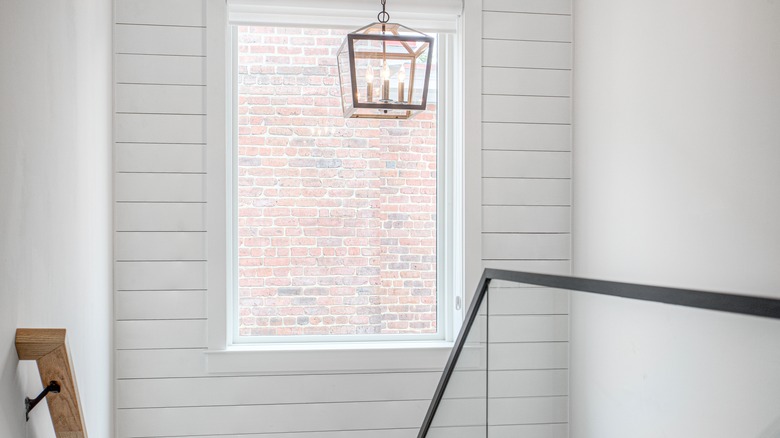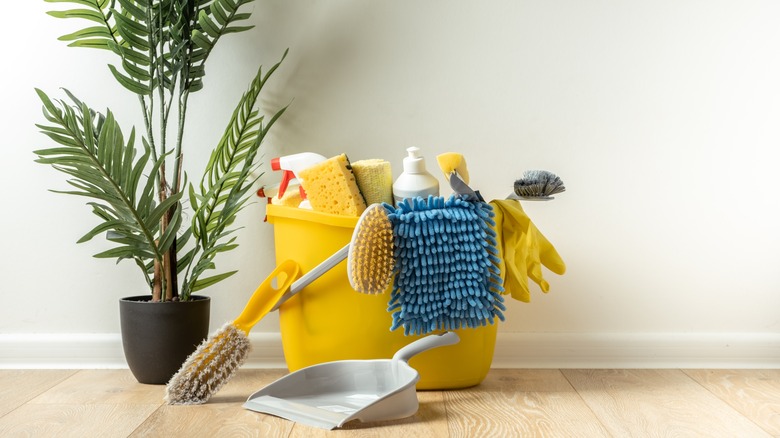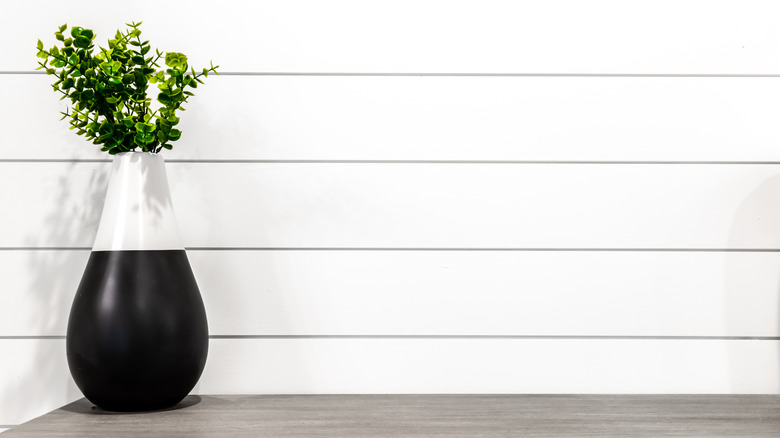The Best Way To Clean Shiplap Surfaces In Your Home To Get It Looking Pristine
Shiplap truly has a special place in the heart of home design, weaving a thread of rustic elegance through spaces that aim to blend the modern with the traditional. Its signature style, marked by overlapping boards, crafts a striking horizontal pattern that injects both depth and personality into any setting. Yet, this same textured surface that so beautifully characterizes shiplap also makes it a magnet for dust, grime, and the occasional stubborn stain that can settle in the channels of each wood piece. This grime, if left unchecked, can detract from the wood's natural beauty. Thus, regular and mindful cleaning of your shiplap walls becomes not just about upkeep for appearances' sake but a crucial step in safeguarding your investment in your home's design.
To embark on this cleaning journey, you'll need to arm yourself with a few basic tools: a bucket filled with warm water, a bottle of mild detergent, and a soft, non-abrasive cloth. There's no need to resort to harsh chemicals in this process. The aim is to carefully remove the impurities that have settled on the shiplap surface, doing so with a tender touch without introducing too many unnecessary chemicals or moisture, which can be detrimental to the wood, leading to potential swelling, warping, or mold issues.
Cleaning shiplap: removing grime and dirt
To get started, grab the bucket and mix some warm water with a squirt of the detergent. Next, dip the cloth into the mixture and squeeze it out thoroughly to ensure the cloth is damp, not wet. Start at the top of the wall and work your way down. This method allows you to tackle every inch of the surface, ensuring no board is left behind. Pay extra attention to the grooves between the boards; these are prime spots for dust to settle.
Remember to frequently rinse the cloth in clean water as you go along. And when you come across stubborn stains that seem to stand their ground, don't panic. The detergent solution you've prepared should do the trick. Apply it directly to the stains. If your shiplap needs a bit more than just a surface clean, you can create a new solution made up of an equal amount of water and vinegar and add it to a spray bottle. Lightly mist your shiplap with the spray, then gently wipe it down with your cloth. The vinegar acts as a natural disinfectant and cleaner, effectively breaking down stubborn dirt without the need for harsh chemicals.
When you're done with cleaning, you'll need to fully dry the shiplap. Find a spotless, absorbent towel and dab away any residual dampness. This careful drying process is vital, as it wards off the formation of water spots and acts as a barrier against the potential invasion of mold or mildew.
Preventing common issues: finishes, moisture, and sunlight
Beyond cleaning, protection of the shiplap surface is vital. A great next step is to treat the wood with a bit of TLC to ward off future damage. If you haven't yet installed the shiplap wall, consider applying a finish, like a clear varnish or sealant, that will help protect the shiplap from moisture and everyday wear. This will effectively extend its lifespan and preserve its just-like-new appearance. Think of this finish as a shield, one that repels water and simplifies your cleaning efforts down the line.
Now let's talk about moisture. As mentioned earlier, it's no friend to wood, with the potential to cause all sorts of havoc, including rot, mold, and warping. If your shiplap is in your bathroom or kitchen, where humidity levels can soar, ensuring good ventilation becomes non-negotiable. Also, leaning toward moisture-resistant paints or finishes can be a game-changer, offering an extra layer of defense to keep that dreaded moisture at bay.
And then there's sunlight. Sure, those rays can beautifully highlight the natural grain of your shiplap, giving it a warm, inviting glow. However, too much of a good thing can lead to fading and UV damage over time. To protect against this, try to keep your windows closed or apply a UV-protective finish. These strategies don't just combat the effects of sunlight; they actively work to keep your shiplap's color vibrant and its structure sound.


